A New Home for August—With a Creek
Stream Restored in Habitat for Humanity Neighborhood
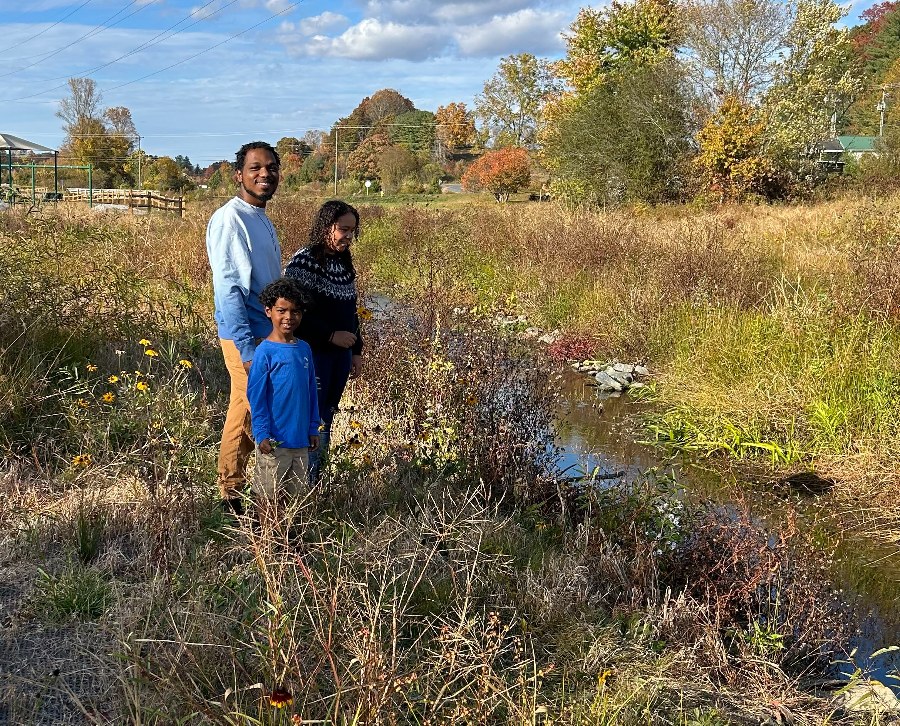
By Rose Jenkins Lane
Alex and Talyah Whitesides were living in a home where they didn’t feel safe raising their child. The house was overcrowded and sometimes there were violent outbursts. One person punched holes in the walls and kicked in the front door, so it could no longer be securely locked. Still, with the high cost of housing, the Whitesides didn’t have many options. They worked hard to fix up the house and keep it clean, but some things were beyond their control. Their young son August was exposed to loud, negative music, cursing, and other influences that they didn’t want in his life.
“To me a home is where you create memories and build your future. A place where you feel most comfortable and secure,” Alex wrote. “Where we live currently does not have any of those.”
This was true outdoors as well as indoors. “Our son does not have freedom to roam around the house,” Alex wrote. “He is confined to one side of the house and is unable to play in the yard due to the beer cans, cigarettes, and trash that are strewn around, none of which are things my family does.”
“We have looked into housing and found Habitat to be our best choice,” Alex wrote. “This is due to the renting rates around us and us wanting some place to call our own.” They applied to Henderson County Habitat for Humanity—and that door opened for them.
What It Takes for Success
Alex and Talyah worked alongside Habitat staff and volunteers to build their own home in Dodd Meadows, a neighborhood in East Flat Rock. In addition to 300 hours of sweat equity, Dodd Meadows families pay an affordable mortgage—no more than 30% of their income. When complete, the neighborhood will have 122 homes, all built to high standards of energy-efficiency and safety. Each house has its own yard and there’s a community center and playground.
“Having a decent place to live at an affordable mortgage allows homeowners and children to feel safe and settled, save more, invest in education, and pursue opportunities,” says Linda Saturno, CEO of Henderson County Habitat for Humanity.

Because Habitat is committed to the success of their homeowners, they also wanted Dodd Meadows to have a natural area for play, relaxation, and exercise. Research shows that people need nature to thrive—and that’s especially true for children. Time spent in nature can improve physical fitness, emotional wellbeing, social connection, creativity, and learning.
When Habitat bought the land for Dodd Meadows, it came with a stream and floodplain. They couldn’t build houses on this strip of land. So, they saw it as a potential neighborhood green space.
But this stream was not the kind of place the Whitesides would want to bring their son. The channel had been forced into a straight line, like a ditch. Its banks were steep and eroding. And the land around it was a mess. Saturno says, “One year ago, you would have seen a bunch of scraggly looking wasteland and trash in the stream. It looked like a place you wouldn’t want to walk. There were invasive species everywhere. You couldn’t even really see the stream.”

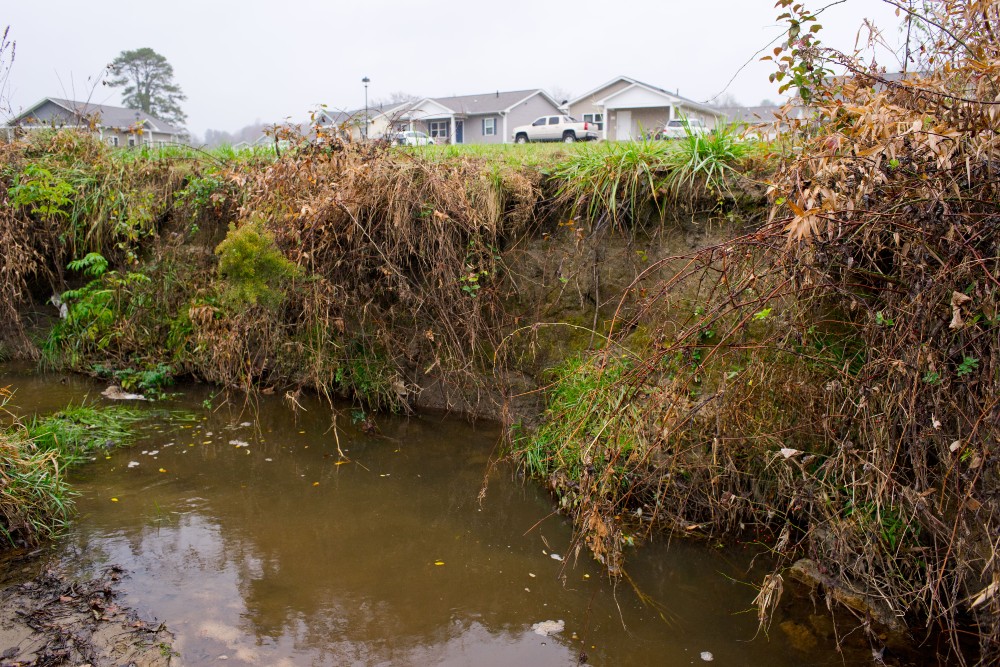
The Creek Gets a New Home
Still, Habitat had a vision for a healthy green space where families could take a walk and kids could watch tadpoles or chase fireflies.
They reached out to the Hendersonville-based nonprofit, Conserving Carolina, to explore whether that was even possible. Bringing this area back to health would take a full-on stream restoration—a major, costly project. For years, the money wasn’t there, but Conserving Carolina kept pursuing grants. Finally, funding came through a grant to Henderson County from the NC Department of Public Safety, because the project will reduce flood risk. Funding for planning and design came from the NC Land and Water Fund and the NC Water Resources Development Grant Program.
Conserving Carolina hired Jennings Environmental and Baker Grading and Landscaping to restore the stream—a section of Bat Fork, which flows into Mud Creek, a tributary of the French Broad River.
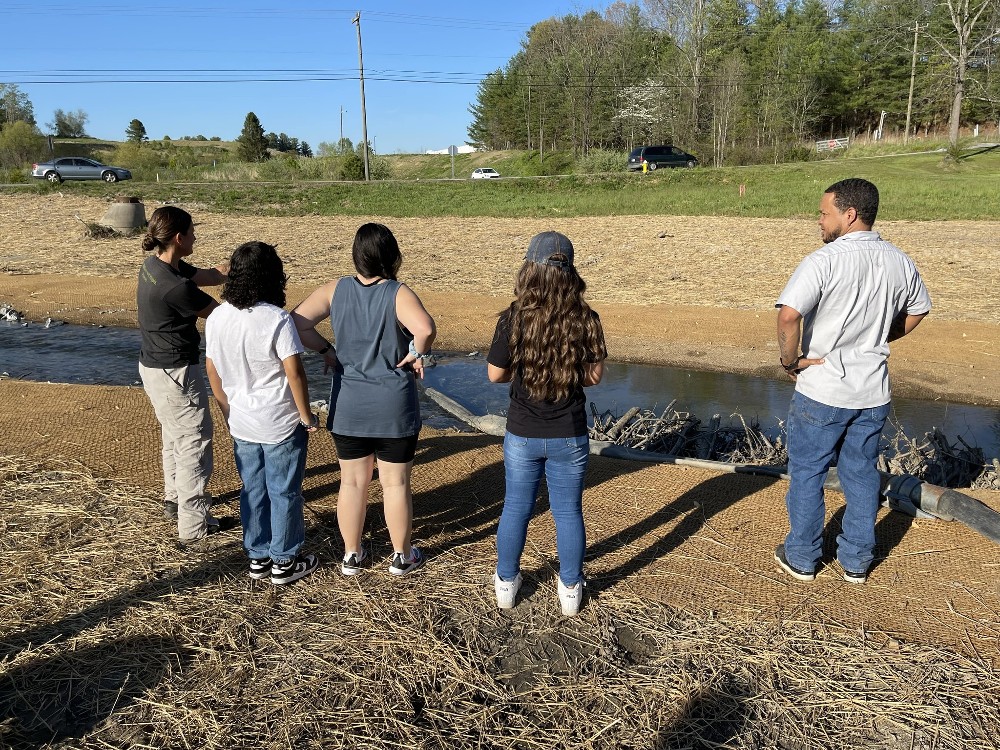
The crew dug a whole new channel for 1,500 feet of Bat Fork and moved it over. Like the families in Dodd Meadows, the stream moved into a new home. Instead of a straight line, the stream now has natural meanders, or curves. Instead of vertical or overhanging banks, it has gently sloped banks that allow water to overflow during floods. These features prevent erosion and improve water quality. In addition, three small streams flowing into Bat Fork were improved—another 250 feet of waterways. The natural floodplain around these streams soaks up water during extreme weather events, so there is less flooding.
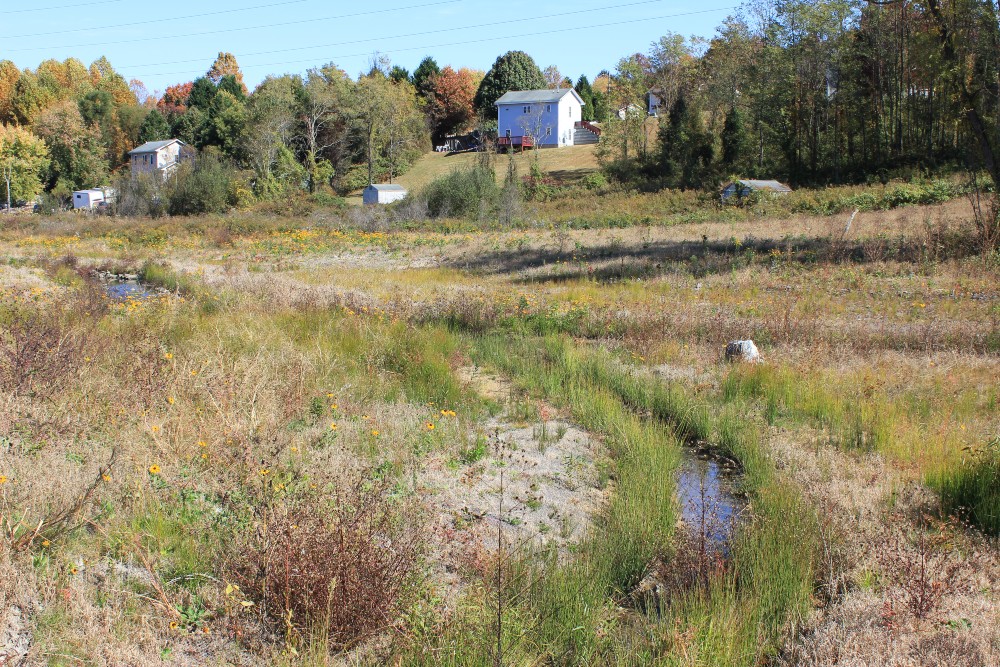
David Lee, Natural Resources Manager for Conserving Carolina, says, “By restoring this section of Bat Fork and its associated floodplain, we’ve created a natural resilient buffer. This buffer will help protect the larger community during times of heavy rainfall and flooding. It will also contribute to the improved health of the entire watershed.”
As part of the restoration project, invasive plants were removed and the area was replanted in native species. And there is a new gravel walking path beside the stream.
By this fall, bright wildflowers were blooming and you could see butterflies, grasshoppers, and frogs in the meadow. Saplings were growing, and further tree planting is planned for the spring. This means that, as August grows up, he will see what used to be a scraggly wasteland around the creek turn into a patch of green woods.
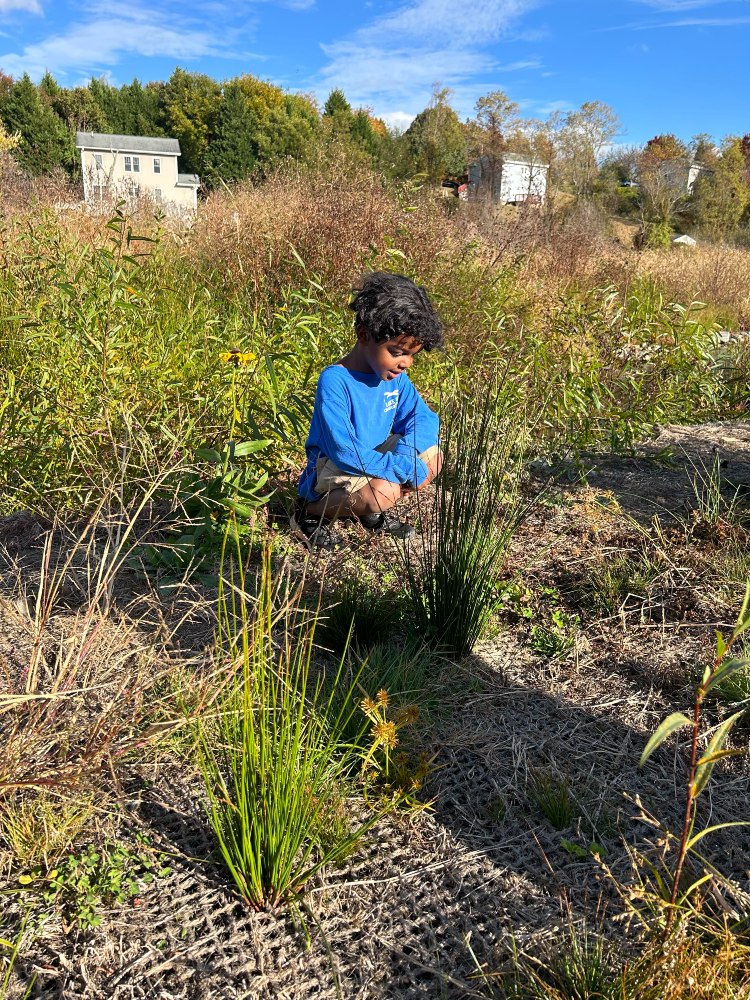
Future Environmentalists
Linda Corns, Habitat’s marketing director, says, “Most of our children would not be exposed to this. Most of them would probably be living in apartments without access to the outdoors and nature, so they would not be able to enjoy this with their families. Now they have walking trails they can walk with their parents or their friends, and it’s right in their backyard.”
Lee says, “The restoration project at Dodd Meadows has value far exceeding flood mitigation and watershed health. Especially with the walking path and educational signs, it can inspire the next generation to care for and protect our natural world. We hope that this opportunity will lead to a deeper appreciation and more active role in the protection of our environment.”
The partnership between these two nonprofits goes well beyond the stream restoration and walking path. Last spring, Conserving Carolina collaborated with Habitat to revitalize the Dodd Meadows community garden. With input from community members on potential topics, Conserving Carolina offered a Hiking 101 workshop, to be followed by other classes that engage families with the outdoors. Habitat is also planning beehives, where pollinators will turn nectar from their wildflowers into honey.

Some families have responded with enthusiasm. One person told Habitat that it’s “awesome to live where my family can play outside and experience nature.” Another said it’s “great for my family to be able to grow food and learn about our environment while living in our safe, affordable home.”
But not everyone leaps at the chance to be outdoorsy, Saturno says. In a lot of Dodd Meadows families, both parents are working—so they have limited time to get outside. Many parents grew up without much access to nature themselves. They never had the chance to feel at home in nature or see themselves as stewards of nature.
Saturno says, “We’re helping a lot of parents understand what we have available and why it’s important for their kids. We want their kids to be exposed to things that maybe they couldn’t be exposed to before. Providing this wonderful space for our families and our kids, along with the classes that Conserving Carolina is providing, and the garden—it sends a message about the importance of protecting our water and our streams and our natural habitat. We’re making future environmentalists out of these kids.”
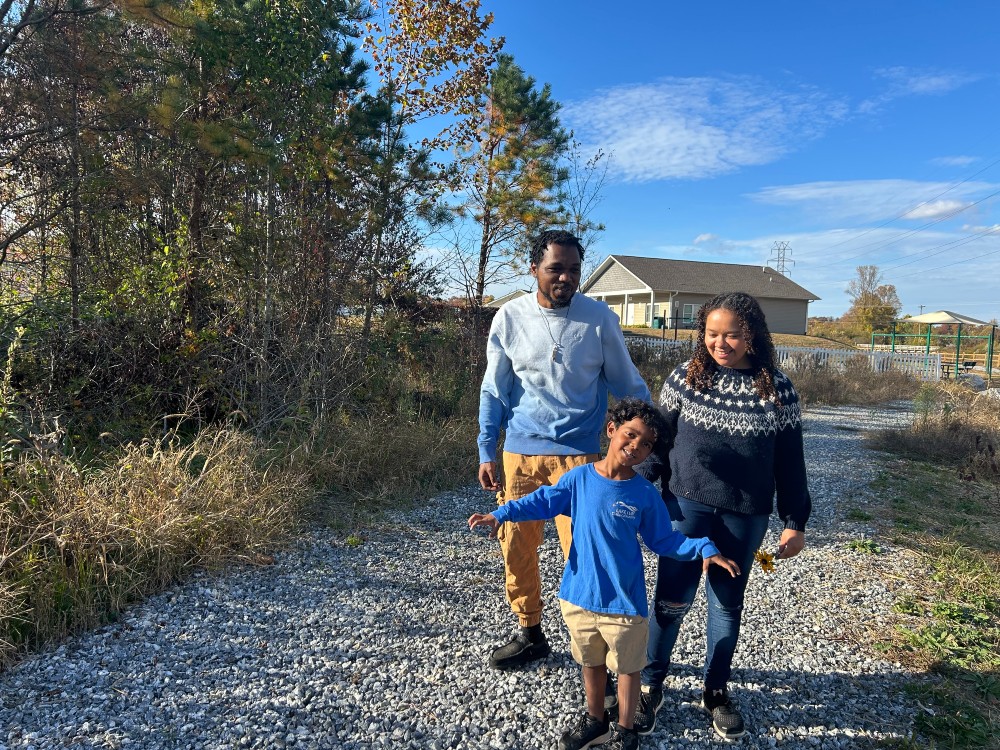
Article by Rose Jenkins Lane